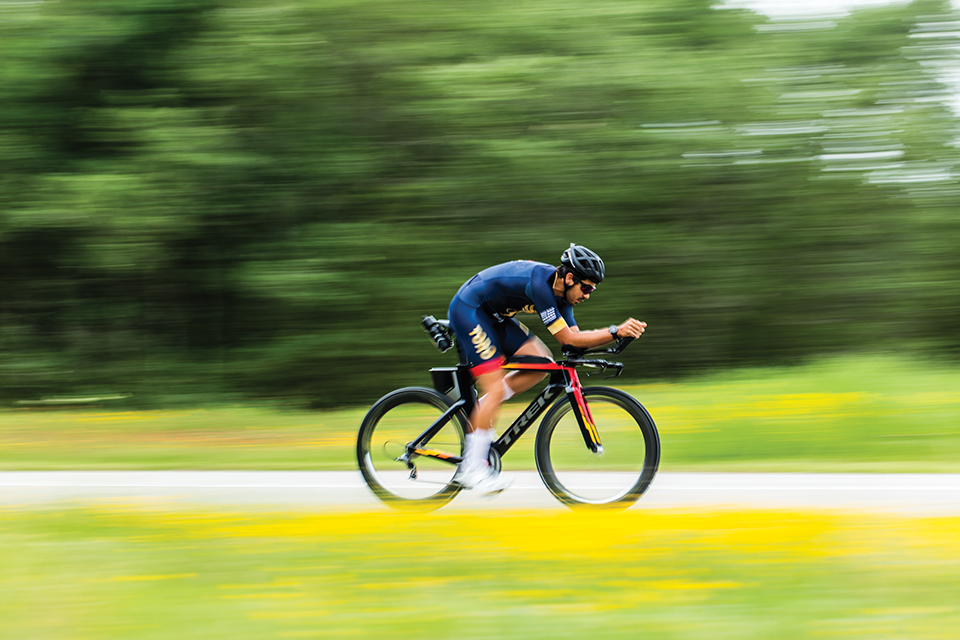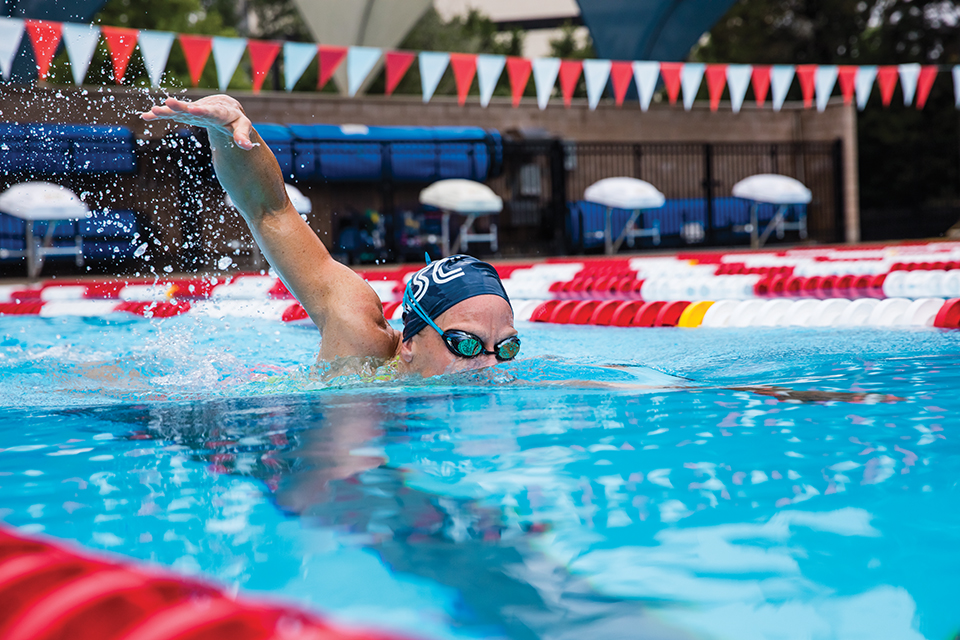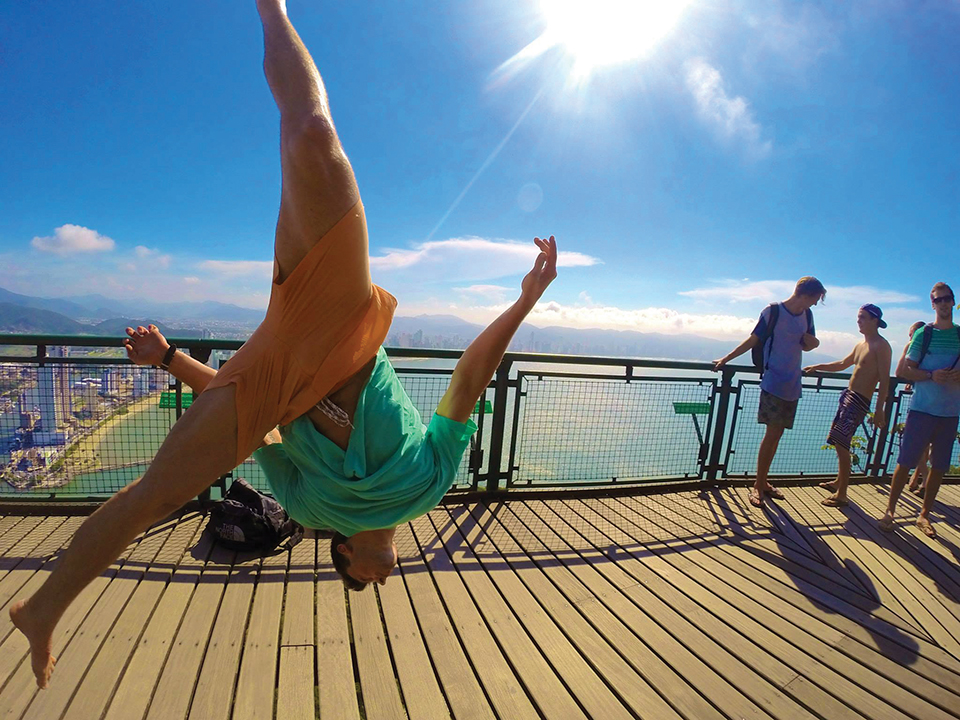Traveling to Train

Each racing season, professional triathlete Pablo Gomez travels to Bogota, Colombia, where he is from, to bike on mountains as tall as 9,000 feet.
He braves the higher elevation and lower oxygen levels to feel the effects of altitude training, a strategy where athletes increase their red blood cell volume at altitude and benefit from it once they return to sea level.
“It’s very demanding on the body,” Gomez says, “But if you do it right, if you take some time to recover when you are there, you can get a boost of fitness out of the whole thing.”
From accessing specific terrains like high-altitude mountains, to maintaining focus during a workout, there are many reasons why athletes like Gomez travel to train.
Altitude training usually takes place for periods of three weeks or longer, according to Ed Coyle, director of UT Austin’s Human Performance Laboratory, which investigates the physiological factors that regulate exercise performance.
Higher altitudes – and the lack of oxygen that comes with them – cause the body to produce a hormone called erythropoietin, or EPO, which is the stimulus to increase red blood cell production, Coyle says.
“When you come back down to sea level, you have more red blood cells to carry oxygen, and that will improve endurance performance,” Coyle says.
It takes a few days to get acclimated to the altitude, Coyle says. It’s common to feel sick as the body adjusts to a change in oxygen pressure. This discomfort is familiar to Gomez.
“Your body’s under so much stress because of the altitude,” Gomez says. “Sometimes you don’t sleep as well, you’re dehydrated because it’s very dry.”
While Coyle says altitude training is not a guarantee of improvement, as training intensities such as running speed are often reduced in the harsher environment, the method can benefit professional athletes looking to shave seconds off their competition time.

Missy Kuck, a swim coach at the Austin Aquatics and Sports Academy, also has experience competing in triathlons. Over the 20 years she spent as a triathlete — six of which were professional — she traveled to several different states to train.
“I would do the training trips to get something that I couldn’t get locally,” Kuck says. “For example, if you’re gonna go to Asheville, North Carolina or northern Georgia, you’re going there to bike the hills, or if you’re gonna do a training trip somewhere south and you live north, you’re doing it to acclimate to the humidity.”
Training trips to Asheville were some of Kuck’s most memorable. There, she was exposed to mountainous terrains that made her workouts challenging, but effective.
“A lot of times you get used to your training area, whether it’s riding flats or false flats, maybe short hills, and then you go on a training trip and you’re going to get to climb up mountains,” Kuck says. “All of a sudden, all the hills at home seem like little speed bumps.”
Kuck says while traveling comes with it’s challenges, from dealing with unfamiliar landscapes to the logistics of housing and transporting equipment, there are ways to make the experience easier, such as traveling with a group or contacting a training facility at the destination and using their equipment.
“Variation will improve your training,” she says, regardless of if you are a professional athlete or not.
Both Kuck and Gomez have found that traveling to train helps them maintain focus. When he attends training camps in places such as Arizona, Gomez says he has a different mindset than he would have in Austin.
“In the city that you live in, you always have distractions; you always have, ‘I can go and run errands or do groceries or meet with friends,’” Gomez says. “When you go to these mini training camps or longer training camps, you just have one thing to do, and it’s to train.”

Colin Van Ert took this focus to the extreme when he traveled to Goiânia, Brazil to practice and perform capoeira, an Afro-Brazilian martial art. Van Ert slept on a cot in a tiny house, and for two months, his life revolved around training.
“That’s pretty much all I did — just eat, sleep, train, rest, repeat,” Van Ert says.
Capoeira combines music, dance and acrobatics, and is performed in what’s called a game. In this game, two individuals — the capoeiristas — are surrounded by a circle of people and perform martial arts movements with each other in a dance-like fashion.
In Brazil, Van Ert trained with a capoeira master, practicing movement, working on sequences and conditioning. He says traveling to train helped him improve at the sport, while also exposing him to a new country and culture.
“It was just a big adventure,” Van Ert says. “I was really excited to go and be in a place that was completely different.”
Since then, Van Ert says capoeira has helped him find community in other countries he’s visited. He says when he travels to new places, it’s easy to reach out to and feel welcomed by other athletes who practice the martial art.
“Training is a great place to find community,” Van Ert says. “And then when you travel, it’s an awesome way to get more connected to wherever you are.”






